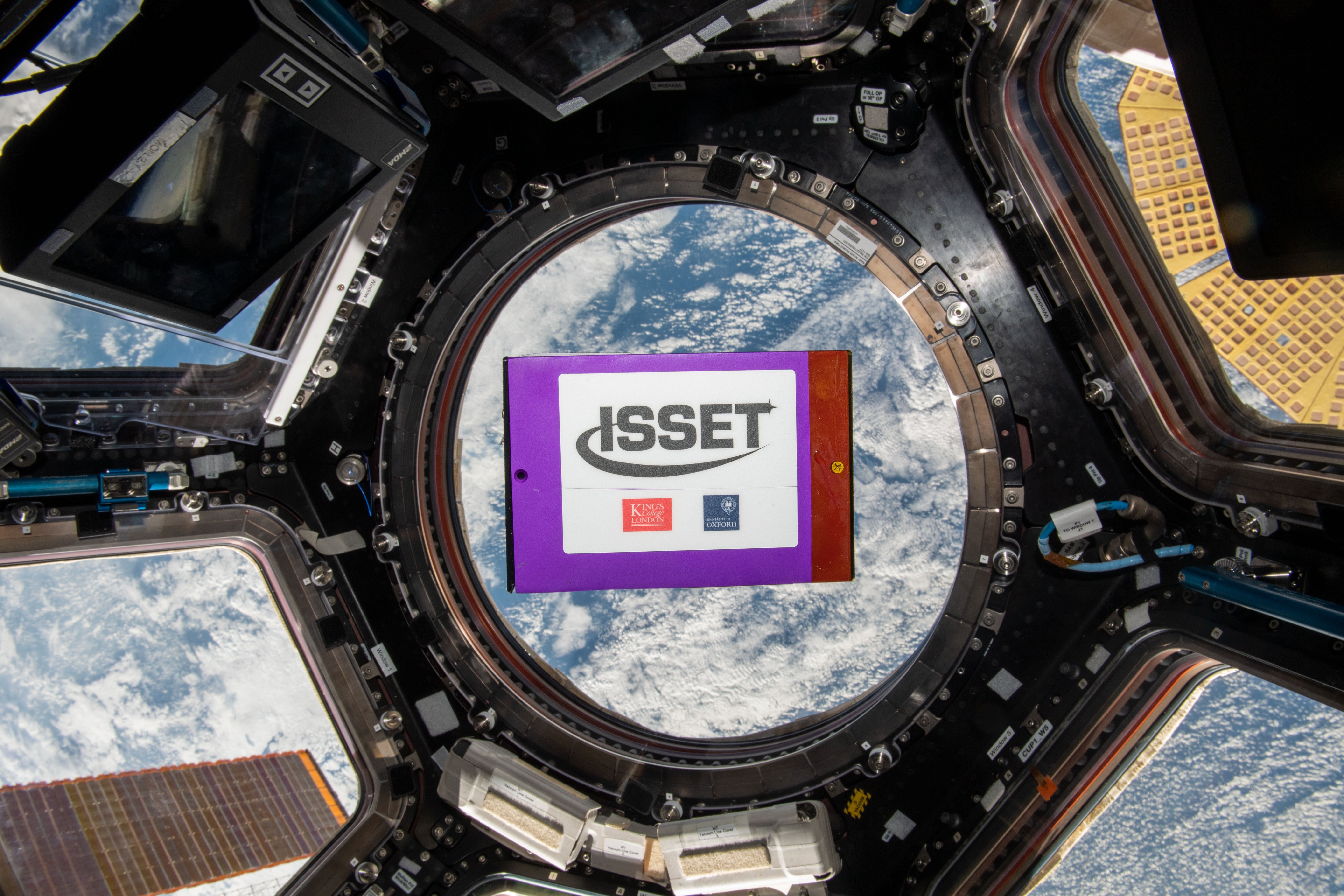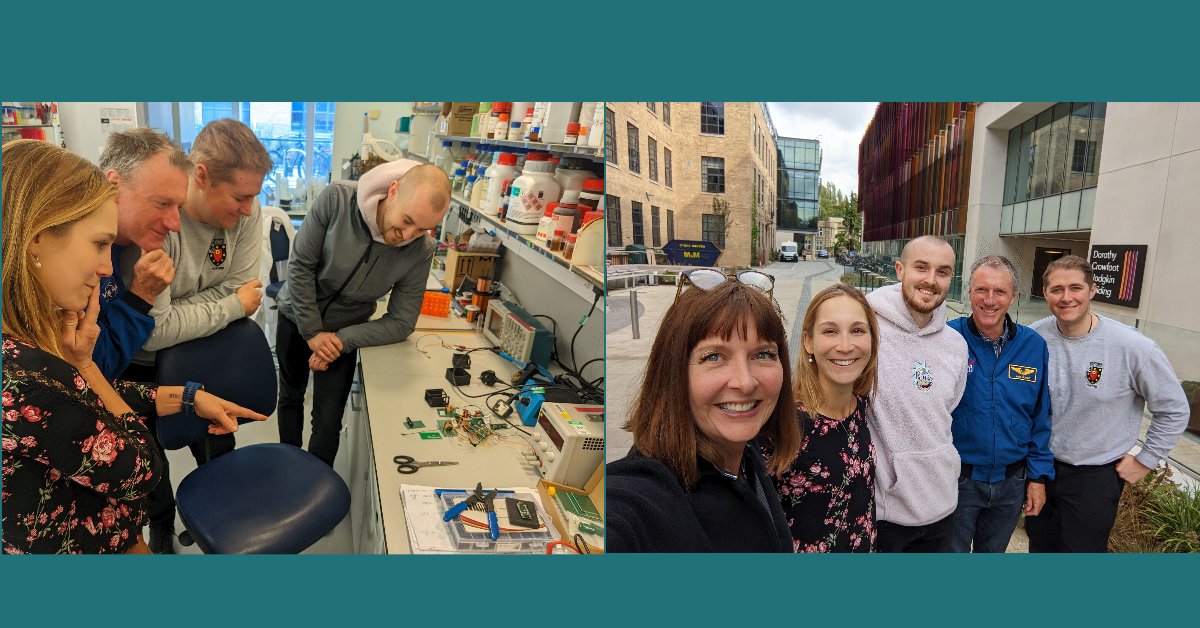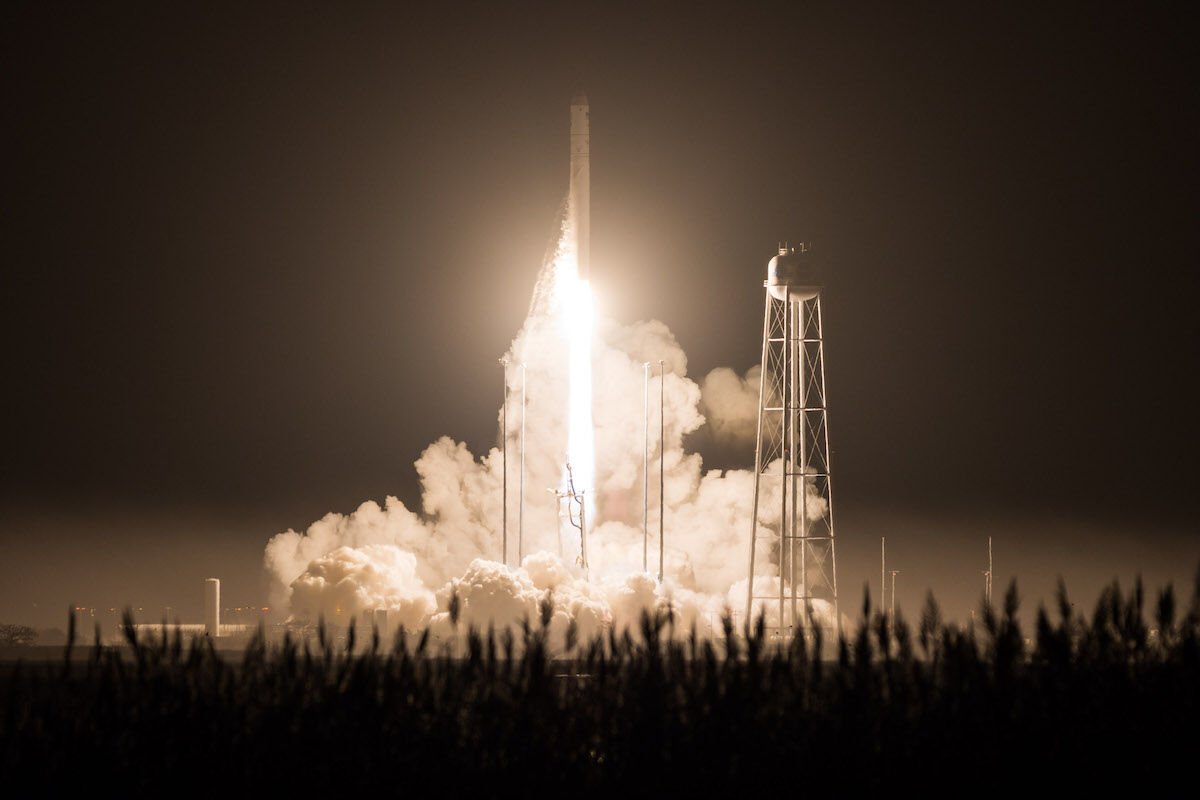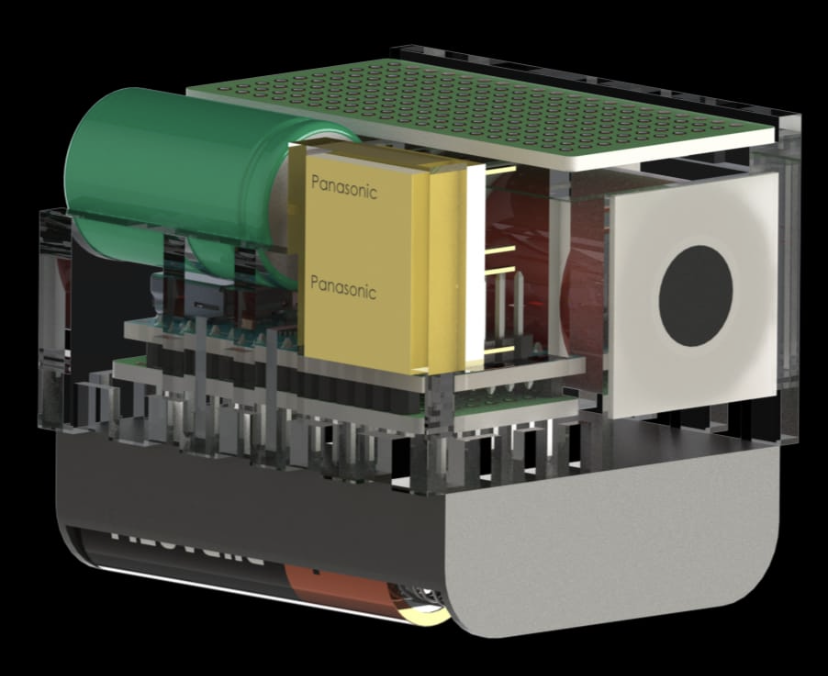St John’s DPhil student leads team to send new experiments to the International Space Station
 The module carrying the Oxford developed Ferrofluid Induction in Microgravity experiment onboard the International Space Station
The module carrying the Oxford developed Ferrofluid Induction in Microgravity experiment onboard the International Space Station
This work was done in collaboration with the International Space School Educational Trust (ISSET), an education provider offering students aged 14-18 an opportunity to propose an experiment to launch to the International Space Station. The task of developing this experiment, submitted by a team of students from the ISSET Mission Discovery London 2021 programme, was given to Daniel Molland, an ISSET Chief Scientist, who recruited a team from across the University to develop the experiment.
The team members: Laurel Kaye (Worcester College), Aleksander Zagajewski (Keble College), Jack Enright (Merton College), Dr Daniel Cervenkov (Department of Physics) and Daniel Molland (St Johns College), worked together to develop the idea, which aimed to investigate how ferrofluids inductive behaviour changed in microgravity while being manipulated by two internal opposing electromagnets, into a fully functioning experiment system. Supported by Dr Foale, who checked in on the team throughout, the experiment passed its NASA safety review in late 2022. It was approved for launch on Cygnus NG18, with its data due to be returned on SpaceX CRS26.
The experimental development process for the project allowed Dan to pass on critical skills from his previous work on payload development, teaching the team the principles of experimental development for microgravity, the process of NASA safety evaluation and approval for flight and how to prepare experiments for launch, essential skills to meet the needs of the rapidly growing space economy which is expected to be worth over £490 billion by 2030.
 Veteran British American Astronaut Dr Mike Foale supported the team throughout the project and visited the Department of Biochemistry in October to check on the team’s progress.
Veteran British American Astronaut Dr Mike Foale supported the team throughout the project and visited the Department of Biochemistry in October to check on the team’s progress.
Supported by funding from their colleges and departments, team members were able to fly to the USA to view the launch after some final payload integration performed at the Eastern Virginia Medical School. On November 7th, the team headed out before dawn to view the launch from just 4 miles down range and were treated to a spectacular view of their experiments being lofted into space by an Antares rocket with its Cygnus capsule then docking to the International Space Station on November 9th.
 Lift off of the Cygnus NG18 resupply mission carrying the ferr ofluids experiment alongside several other ISSET experiments to the International Space Station. Image Credit: Alex Polimeni / Spaceflight Now
Lift off of the Cygnus NG18 resupply mission carrying the ferr ofluids experiment alongside several other ISSET experiments to the International Space Station. Image Credit: Alex Polimeni / Spaceflight Now
Following its arrival, the module carrying the ferrofluid experiment and the 5 other bioscience experiments, was imaged by NASA astronaut Nicole Scott. This amazing shot features the first display of both the University of Oxfords and King’s College London’s branding at the cupola of the International Space Station. Veteran British American Astronaut Dr Mike Foale supported the team throughout the project and visited the Department of Biochemistry in October to check on the team’s progress.
The experiment was activated on November 10th by Nicole Mann and operated for over 40 minutes in the unique microgravity environment onboard the International Space Station. Data from this will increase our understanding of how ferrofluids behave in microgravity and also providing more data on fluid mechanics in microgravity, where the low gravity leads to extreme variations in fluid properties compared to Earth. The team are currently looking forward to January 2023 when the data will be returned to Earth onboard the SpaceX CRS26 return mission.
 The ferrofluid induction in micrograv ity experiment , size constraints meant that the entire structure, including all electrical components and the electromagnets had to fit in to an area about the size of an apple!
The ferrofluid induction in micrograv ity experiment , size constraints meant that the entire structure, including all electrical components and the electromagnets had to fit in to an area about the size of an apple!
As well as leading the development of this experiment, Daniel also developed a further two experiments personally, which launched alongside this one, and co-investigated 18 additional investigations composed of a variety of high school student-submitted experiment ideas as well as PhD projects from the University of West Scotland which launched on Cygnus NG18 and SpaceX CRS26
More information on this experiment and the others that were launched with Dan’s assistance during this launch campaign can be found on the NASA website here.
You can find information about other projects Dan worked on to support the launch here and here.